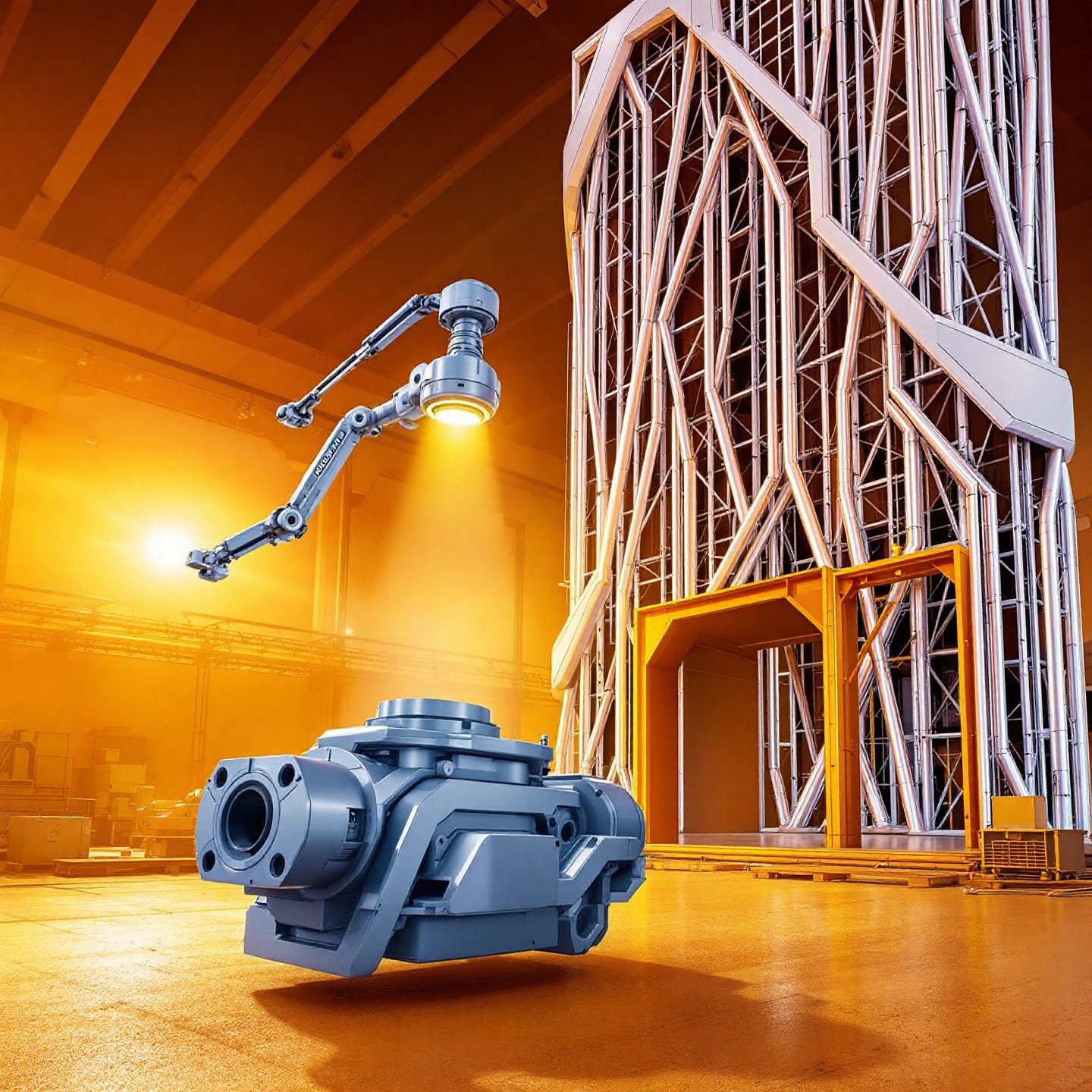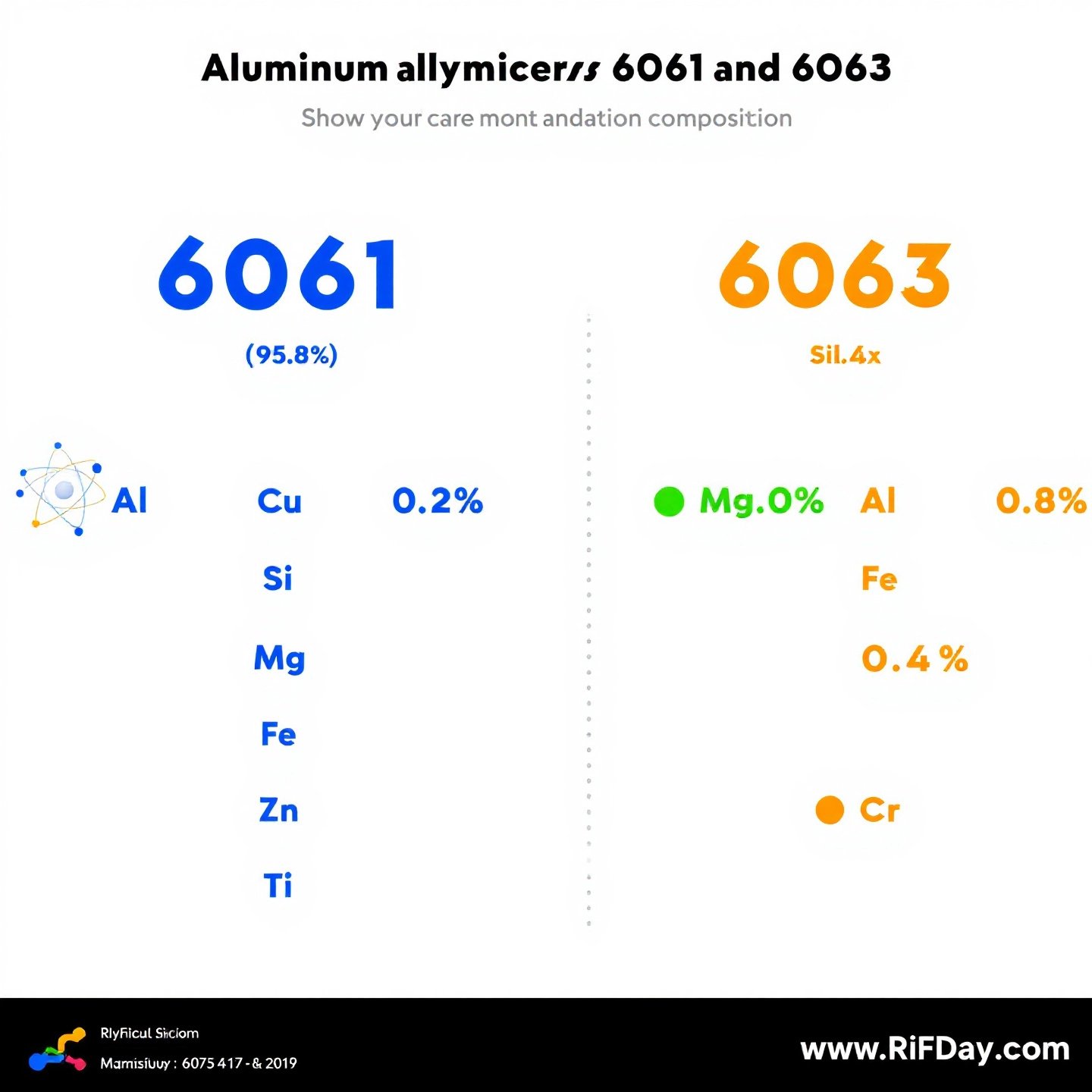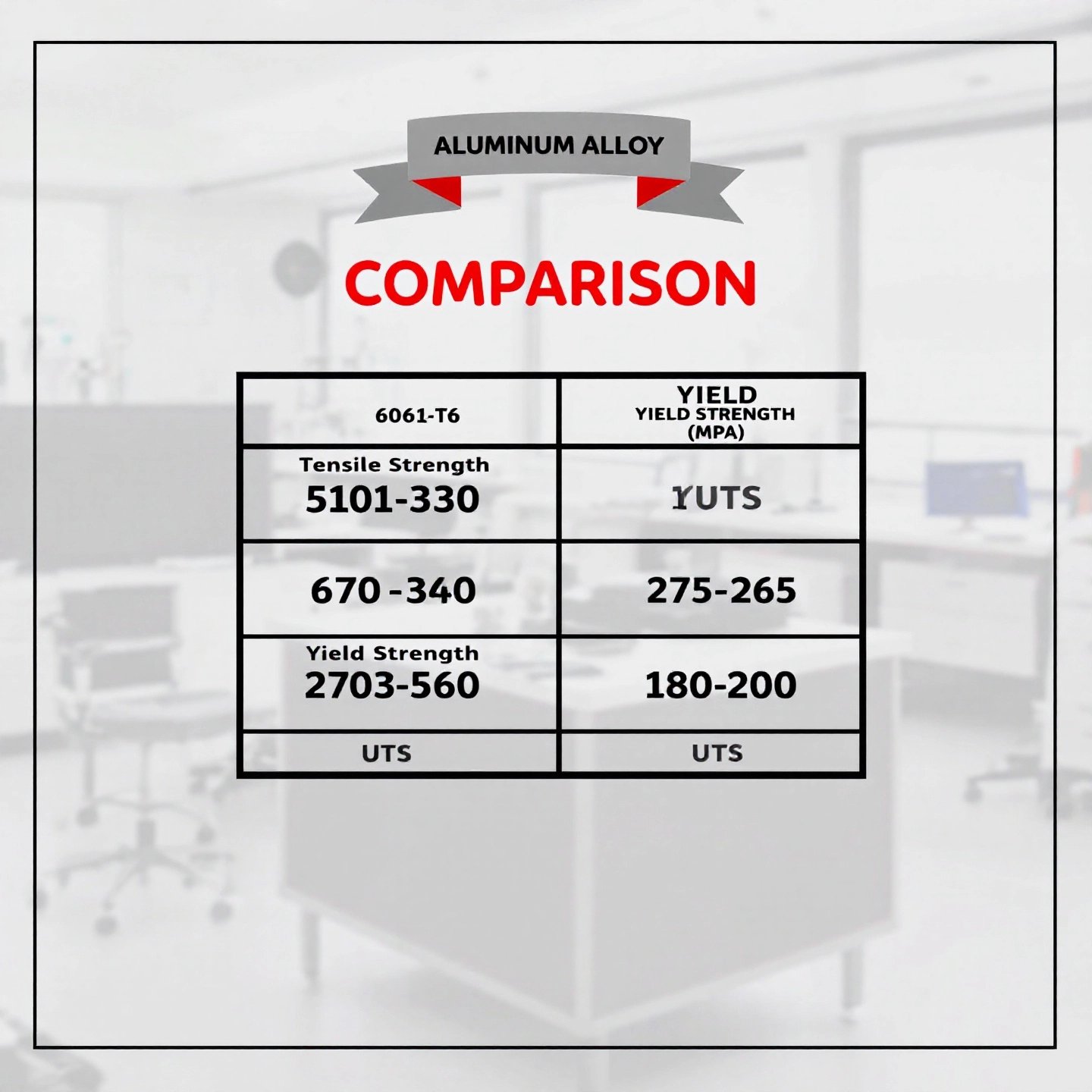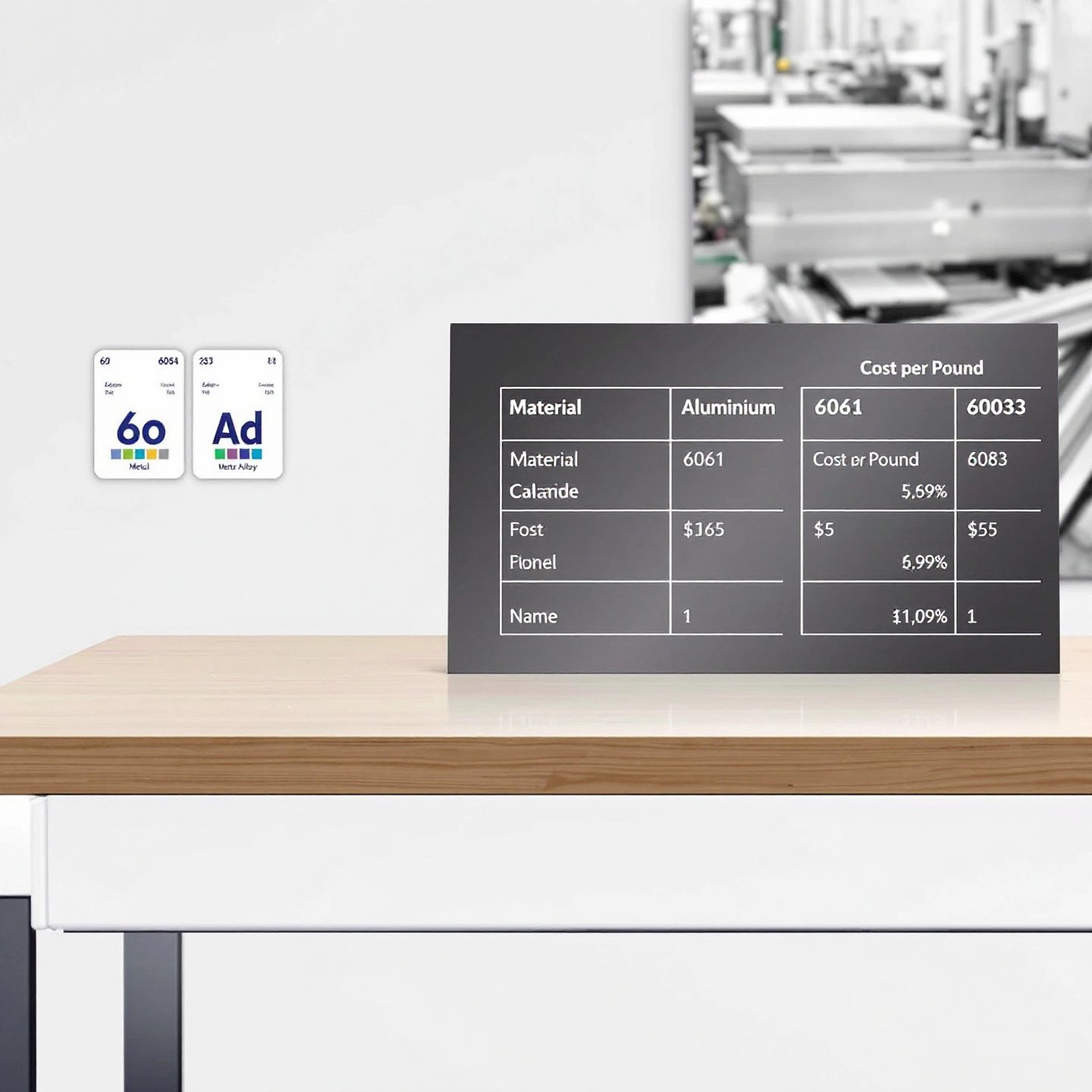
When it comes to selecting the right aluminum alloy for your manufacturing needs, the choice between Aluminum 6061 and 6063 is a pivotal decision that can significantly impact the outcome of your project. These two alloys, both part of the 6xxx series, are renowned for their distinct properties and are widely used across various industries. But what makes them so significant, and how do they compare?
Aluminum 6061 and 6063 are both prized for their exceptional strength-to-weight ratios, corrosion resistance, and versatility. However, each alloy brings unique attributes to the table that cater to different industrial applications. For instance, Aluminum 6061 is often favored for its high strength and versatility, making it a popular choice in structural applications such as aerospace and automotive industries. On the other hand, Aluminum 6063 is celebrated for its excellent surface finish and superior corrosion resistance, making it ideal for architectural and decorative applications.
The primary goal of this article is to provide a comprehensive comparison of Aluminum 6061 vs 6063. We will delve into their chemical compositions, explore their mechanical properties, and discuss their typical applications. Additionally, we will analyze their cost-effectiveness and highlight considerations for selecting the right alloy based on your specific project needs.
Understanding the nuances between these two alloys is crucial for manufacturers and designers who seek to optimize their material selection process. Whether you are designing a robust structural component or an aesthetically pleasing architectural feature, choosing the right aluminum alloy can enhance performance, longevity, and cost-efficiency. Join us as we navigate through the intricacies of Aluminum 6061 and 6063, equipping you with the knowledge to make an informed decision for your next project.

When evaluating the differences between aluminum 6061 and 6063, understanding their chemical compositions is fundamental. Both alloys belong to the 6xxx series, which means they are primarily composed of aluminum, magnesium, and silicon. However, the proportions of these elements vary, leading to distinct properties that influence their suitability for different applications.
The chemical composition of these alloys can be summarized as follows:
| Element | 6061 (%) | 6063 (%) |
|---|---|---|
| Magnesium (Mg) | 0.8 - 1.2 | 0.45 - 0.9 |
| Silicon (Si) | 0.4 - 0.8 | 0.2 - 0.6 |
| Copper (Cu) | 0.15 - 0.4 | 0.1 |
| Chromium (Cr) | 0.04 - 0.35 | 0.1 |
As illustrated, 6061 contains higher levels of magnesium and silicon compared to 6063. This increased content contributes to its enhanced strength and resistance to corrosion, making it ideal for structural applications. In contrast, 6063's lower magnesium and silicon content, coupled with its higher silicon-to-magnesium ratio, enhances its formability and surface finish, which is why it's often preferred for architectural applications.
The differences in chemical composition significantly affect the weldability and machinability of these alloys. Aluminum 6061, with its higher magnesium content, offers superior machinability and is easier to work with for complex machining processes. It is also better suited for applications requiring high-strength joints, thanks to its excellent weldability. On the other hand, 6063 excels in applications where appearance and surface finish are crucial, given its superior anodizing capabilities and smoother surface finish.
These compositional differences not only dictate the mechanical properties but also influence the cost and availability of the alloys. Understanding these nuances can guide manufacturers in selecting the appropriate material based on the specific demands of their projects.
In the realm of industrial applications, choosing the right aluminum alloy can make a significant difference in performance and longevity. Both aluminum 6061 and 6063 have carved out niches across various sectors, each offering distinct advantages that cater to specific needs.
Aluminum 6061 is highly regarded in industries where strength and durability are paramount. Its robust characteristics make it a staple in the construction and automotive sectors. For instance, in construction, 6061 is often used for structural components due to its high strength-to-weight ratio. In the automotive industry, it is favored for manufacturing parts that require both strength and lightness, such as frames and drive shafts.
Conversely, aluminum 6063 is celebrated for its superior surface finish and corrosion resistance, making it ideal for architectural applications. Its ability to be easily anodized allows for aesthetically pleasing finishes, which is why it is frequently used in window frames, door frames, and other decorative architectural elements. Additionally, 6063 is a popular choice for consumer products that require intricate designs and smooth finishes, such as furniture and sporting equipment.
In aerospace, both 6061 and 6063 find applications, though their usage depends on specific requirements. 6061 is typically used in structural aircraft components due to its strength, while 6063 might be chosen for non-structural parts where appearance and corrosion resistance are more critical.
For large-scale industrial applications requiring custom extrusions or complex profiles, Shengxin Aluminum stands out as a leading provider. With their extensive experience and advanced manufacturing capabilities, Shengxin offers tailored solutions that meet the rigorous demands of various industries, including rail transit and new energy vehicles. Their expertise ensures that whether you choose 6061 for its strength or 6063 for its finish, you'll have access to high-quality extrusions that align with your project's specifications.
In summary, the choice between aluminum 6061 and 6063 should be guided by the specific demands of your application. Whether prioritizing strength or surface finish, both alloys offer unique benefits that can be leveraged across diverse industrial sectors.

When choosing between aluminum 6061 and 6063, understanding the strength differences is crucial, especially for applications where structural integrity is paramount. Both alloys are part of the 6xxx series, known for their strength and versatility, but they exhibit distinct mechanical properties that make each one suitable for different uses.
Aluminum 6061 is renowned for its excellent strength-to-weight ratio, making it a preferred choice in applications requiring robust structural support. It typically offers higher tensile and yield strength compared to 6063, which translates into better performance in demanding environments. Here’s a quick comparison of their typical strength values:
As shown, 6061-T6 significantly outperforms 6063-T52 in terms of strength, which is a critical factor in structural applications where load-bearing capacity is essential. This makes 6061-T6 a popular choice in aerospace and automotive industries where high strength is a prerequisite.
The mechanical performance of aluminum alloys can be dramatically altered through heat treatment processes. For instance, the T6 temper of 6061 is achieved through solution heat treatment and artificial aging, which enhances its strength and hardness. On the other hand, the T52 temper of 6063 is obtained through a different heat treatment process that focuses on enhancing its formability and surface finish rather than maximizing strength.
These differences highlight the importance of selecting the appropriate temper based on the specific requirements of your project. If your application demands high strength and durability, 6061-T6 is likely the better choice. However, if ease of forming and a superior surface finish are more critical, 6063-T52 may be more suitable.
In conclusion, while both 6061 and 6063 offer distinct advantages, understanding their strength variations and the impact of different heat treatments can help you make a more informed decision. Whether prioritizing tensile strength or surface quality, each alloy provides unique benefits tailored to specific industrial needs.
Understanding heat treatment processes is essential for leveraging the full potential of aluminum alloys, particularly when comparing 6061 T6 vs 6063 T52 . These processes play a pivotal role in enhancing properties such as hardness and ductility, ultimately influencing the performance of the final product.
Annealing is a heat treatment process used to soften aluminum alloys, relieve internal stresses, and improve ductility. During annealing, the alloy is heated to a specific temperature, held there, and then cooled slowly. This process allows the crystalline structure to reset, enhancing the formability of the material. For instance, annealing can transform a cold-worked 6061 alloy into a more malleable state, making it easier to shape without cracking.
Solution heat treatment is another critical process, particularly for achieving the T6 temper in 6061 aluminum. This involves heating the alloy to a high temperature, allowing alloying elements to dissolve completely into the aluminum matrix, by rapid quenching to 'freeze' the microstructure. This process sets the stage for subsequent aging, which increases the hardness and strength of the alloy.
After solution heat treatment, artificial aging, or precipitation hardening, is used to further enhance the mechanical properties. For 6061 T6, this involves heating the alloy to a lower temperature and maintaining it for a specified period to precipitate out alloying elements, resulting in a significant increase in strength. In contrast, the T52 temper of 6063 undergoes a more moderate aging process, which emphasizes maintaining ductility and surface finish.
In summary, understanding the nuances of aluminum heat treatment is crucial for selecting the right temper and ensuring optimal performance of aluminum alloys. Whether you need the robust strength of 6061 T6 or the excellent formability and finish of 6063 T52, the right heat treatment can make all the difference in achieving your project's goals.

When selecting between aluminum 6061 and 6063, understanding their corrosion resistance is crucial, particularly for applications exposed to harsh environments. Both alloys exhibit commendable durability, but they differ in how well they withstand corrosion under various conditions.
Aluminum 6061 is known for its good corrosion resistance, particularly in environments with exposure to freshwater and mild industrial conditions. Its higher magnesium content contributes to its ability to resist corrosion, making it suitable for structural applications where exposure to the elements is a concern.
Conversely, aluminum 6063 offers superior corrosion resistance, especially in marine or coastal environments. This advantage is largely due to its optimized surface finish and ability to be anodized effectively, which enhances its protective oxide layer. This makes 6063 a preferred choice for architectural applications where aesthetic appeal and durability against weathering are essential.
To further enhance the corrosion resistance of these alloys, various surface treatments can be applied:
These treatments not only improve the longevity of aluminum products but also enhance their aesthetic appeal, making them more desirable for consumer-facing applications.
In conclusion, while both aluminum 6061 and 6063 provide robust corrosion resistance, the choice between them should be guided by the specific environmental conditions and aesthetic requirements of your project. By selecting the appropriate alloy and applying the right surface treatment, you can ensure that your aluminum components maintain their integrity and appearance over time.
When it comes to aluminum tubing applications, choosing between 6061 and 6063 alloys can significantly impact the performance and aesthetics of the final product. Both alloys offer unique benefits, making them suitable for various design and functional requirements in tubing.
Aluminum 6063 is often lauded for its excellent formability, making it the ideal choice for applications requiring intricate designs and smooth finishes. Its superior ability to be extruded into complex shapes is why it is frequently used in architectural and decorative tubing applications. The alloy's fine grain structure allows for a high-quality surface finish, which is critical for visible components.
On the other hand, aluminum 6061, while slightly less formable than 6063, offers a higher strength-to-weight ratio. This makes it more suitable for structural tubing applications where durability and strength are paramount. Its robust nature makes it a common choice for load-bearing structures and components exposed to mechanical stress.
Both 6061 and 6063 exhibit good weldability, but there are nuanced differences that can influence your choice. Aluminum 6061 is known for its excellent welding characteristics, particularly in the T6 temper, which is often preferred for structural applications requiring high-strength welded joints. However, post-weld heat treatment is recommended to restore its original strength.
Aluminum 6063, although not as strong as 6061, provides a smoother finish after welding, which is beneficial for applications where aesthetics are crucial. Its ability to be anodized easily also enhances its corrosion resistance post-welding, making it a versatile choice for both indoor and outdoor applications.
For projects requiring custom tube extrusions with specialized finishes, Shengxin Aluminum offers unparalleled expertise and capabilities. Their advanced processing techniques and commitment to quality ensure that whether you choose 6061 for its strength or 6063 for its finish, your tubing applications will meet the highest standards of performance and design.
In conclusion, the choice between aluminum 6061 and 6063 for tubing applications should be guided by your specific design and functional requirements. By leveraging the strengths of each alloy and partnering with a trusted provider like Shengxin Aluminum, you can achieve optimal results tailored to your project's needs.

When selecting between aluminum 6061 and 6063, understanding the cost implications is crucial for making an informed decision. Both alloys offer unique benefits that can influence the overall budget and value of a project. Let's delve into the cost dynamics of these two popular aluminum alloys.
Aluminum 6061 is generally more expensive than 6063 due to its higher strength and versatility. The additional alloying elements in 6061, such as copper and chromium, contribute to its enhanced mechanical properties, which can drive up production costs. However, this increased cost can be justified in applications where strength and durability are paramount, such as in structural components or load-bearing applications.
In contrast, aluminum 6063 tends to be more cost-effective, particularly for projects where aesthetics and corrosion resistance are prioritized over sheer strength. Its lower silicon and magnesium content, along with its superior formability, make it an economical choice for architectural applications and consumer products where complex shapes and smooth finishes are desired.
To provide a clearer picture, here is a simple table comparing the typical market prices for these alloys:
| Alloy | Price Range (USD per pound) |
|---|---|
| 6061 | $1.50 - $1.80 |
| 6063 | $1.20 - $1.50 |
These prices reflect the general market trends as of 2023 and can fluctuate based on factors such as global demand, supply chain dynamics, and regional availability. It's important to note that while 6063 is typically less expensive, the choice of alloy should align with the specific requirements and priorities of your project.
Ultimately, the decision between aluminum 6061 and 6063 should not be based solely on price. Consider the long-term value each alloy brings to your project. For instance, while 6061 may have a higher upfront cost, its superior strength and durability can lead to reduced maintenance and replacement costs over time, especially in demanding environments. Conversely, 6063 may offer significant savings in projects where appearance and corrosion resistance are key, without compromising on quality.
In conclusion, a comprehensive evaluation of both the immediate and long-term costs, alongside the specific application needs, will guide you in selecting the most cost-effective and valuable aluminum alloy for your project.
When it comes to selecting between aluminum 6061 and 6063 for your project, understanding the key decision criteria is essential. Each alloy brings its own set of strengths, making them suitable for different applications. Here, we summarize the critical factors to consider, helping you make an informed choice tailored to your specific needs.
To determine the most appropriate alloy for your project, consider the following factors:
By weighing these criteria, you can align your choice with the specific demands of your project, ensuring both performance and cost-efficiency.
To assist in your decision-making process, use this checklist as a guide:
Ultimately, the choice between aluminum 6061 and 6063 should be driven by the specific requirements and priorities of your project. By carefully considering these factors, you can ensure that your selected alloy will deliver optimal results, enhancing both the performance and longevity of your application.
As we conclude our exploration of aluminum 6061 vs 6063, it's clear that both alloys offer unique advantages tailored to different applications. Aluminum 6061 stands out for its exceptional strength and versatility, making it the go-to choice for structural and load-bearing applications. Its robust mechanical properties make it indispensable in industries such as aerospace and automotive, where durability and high performance are critical.
Conversely, aluminum 6063 excels in applications where formability and aesthetic appeal are paramount. Its superior surface finish and excellent corrosion resistance make it ideal for architectural and decorative purposes. Whether it's for window frames, door frames, or intricate consumer products, 6063 offers the perfect balance of beauty and functionality.
Choosing the right alloy depends on your specific project needs, whether it's prioritizing strength and durability with 6061 or focusing on surface finish and corrosion resistance with 6063. By understanding the distinct properties of each alloy, you can make an informed decision that aligns with your project's requirements.
For those seeking high-quality aluminum profiles, Shengxin Aluminum offers unparalleled expertise and capabilities. As a leading manufacturer, Shengxin Aluminum provides tailored solutions that meet the rigorous demands of various industries. With their extensive range of production lines and commitment to quality, Shengxin ensures that your alloy needs are met with precision and excellence.
In summary, whether you need the strength of 6061 or the elegance of 6063, Shengxin Aluminum is your trusted partner for achieving optimal results. Explore their offerings and leverage their expertise to enhance the performance and longevity of your aluminum applications.
6061 aluminum is known for its superior strength and versatility, ideal for structural uses, while 6063 excels in extrusion and corrosion resistance, making it popular for architectural applications.
6063 aluminum is commonly used in piping, extrusions, tubing, furniture, marine, automotive, aerospace, and aviation due to its flexibility, weldability, and excellent surface finish.
6063 aluminum is generally better for anodizing due to its excellent surface finish and corrosion resistance, while 6061 is preferred for its strength in structural applications.
6063 is generally more cost-effective, especially for projects emphasizing aesthetics and corrosion resistance, while 6061 is pricier due to its superior strength.
Heat treatments like annealing and solution heat treatment enhance the mechanical properties of aluminum alloys, with 6061 T6 offering high strength and 6063 T52 providing better formability.
 Интернет Сервис
Интернет Сервис 0086 136 3563 2360
0086 136 3563 2360 sales@sxalu.com
sales@sxalu.com +86 136 3563 2360
+86 136 3563 2360